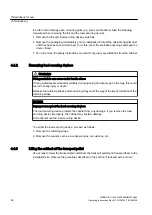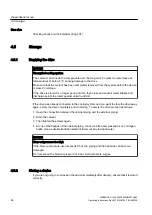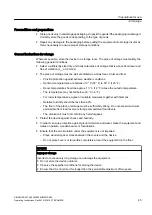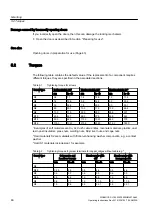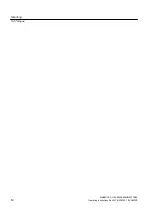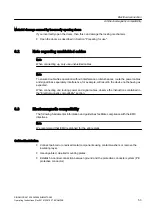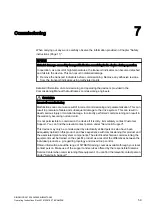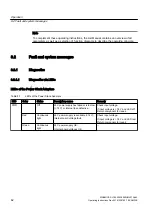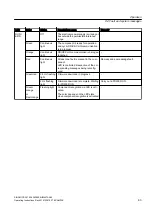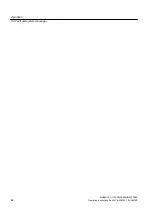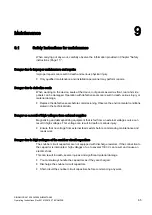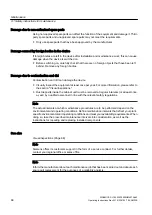
Cable installation
● Cables that are subject to or sensitive to interference should be laid as far apart from each
other as possible.
● The distance between the power cable and the signal cable should be at least 20 cm.
Device-specific data apply for power cables. You can find further information on power
cables under "Connecting power cables".
● When the cables are routed close to ground potential, the immunity to interference is
increased. For this reason, you are advised to lay these cables along edges and at ground
potential.
● Ground the reserve cores on at least one end.
● In order to avoid additional locations where interference can be coupled in, long cables
should be shortened or routed where there is little interference.
● If conductors or cables conduct signals of different classes, then the conductors and cables
must cross at a right angle. This especially involves sensitive and noisy signals.
– Class 1:
Unshielded cables for ≤ 60 V DC
Unshielded cables for ≤ 25 V AC
Shielded analog signal cables
Shielded bus and data cables
Operator panel interfaces, incremental/absolute encoder cables
– Class 2:
Unshielded cables for > 60 V DC and ≤ 230 V DC
Unshielded cables for > 25 V AC and ≤ 230 V AC
– Class 3:
Unshielded cables for > 230 V AC/V DC and ≤ 1000 V AC/DC
– Class 4:
Unshielded cables for > 1000 V AC/DC
Shield connection
● Do not use cable shields to conduct current. It is not permissible that the cable shield is used
as neutral or PE conductor.
● Apply the cable shield so that it covers the greatest possible surface area. Use ground
clamps, ground terminals or ground screw connections.
● Avoid extending the cable shield to the grounding point using a wire. This reduces the shield
effectiveness by up to 90%.
Electrical connection
6.3 Electromagnetic compatibility
SINAMICS SL150 6SL38655UM427AA02
54
Operating Instructions Rev.201910281507 EXAMPLE



